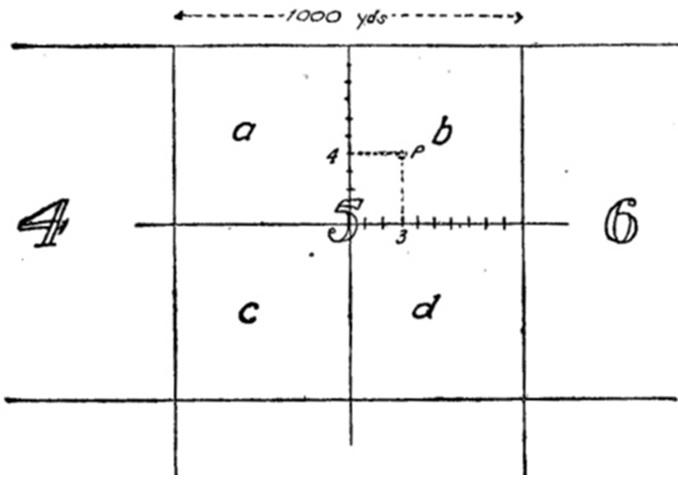Reading map references: First World War, Western Front
Trench maps from the First World War can aid in identifying the areas in which units and individuals served and their movements.
Identifying map references
Map references identify a specific location and are often seen in unit war diaries and service records. These references consist of five parts. For example the map reference for Mouquet Farm is 57d.R.33.b.3.9.
Sheet number
The first part of the map reference is the sheet number, “57d” in the Mouquet Farm example above. The number identifies the 1:40,000 small scale map sheet on which the reference falls.
Letter grid square
Each 1:40,000 map sheet was divided into 24 squares of 6,000 yards designated by a capital letter, the ‘R’ in the Mouquet Farm reference above.
Numbered map square
Each 6,000-yard square was then further subdivided into 36 squares of 1,000 yards and assigned a number, the “33” in the Mouquet Farm reference above.
Quadrant
The numbered squares were then divided into 500-yard quadrants assigned a lower case a, b, c, or d as shown in the diagram below. This is the “b” in the Mouquet Farm reference above.
Grid coordinates
Grid coordinates were used to assign a more specific reference down to tenths of the square, or 50 yards. This is the “3.9” in the Mouquet farm reference above. These coordinates are read from the south-west corner of the quadrant. Point “p” in the diagram below is located three-tenths east and four-tenths north; therefore it is located at “5.b.3.4”.

Diagram 1 from Great Britain War Office General Staff, Maps and Artillery Boards (HMSO, 1917): 8
These coordinates are occasionally shown as a four-figure reference, e.g. “25.85”, specifying to five-yard accuracy.
Notes on scale
1:40,000 scale maps were a complete sheet and depicted an area approximately 32 km wide by 22 km high. They were primarily used for planning operations for formations from Brigade level upwards. These maps may indicate the rough front-line, but trench systems are generally not shown. 1:40,000 sheets are referred to just by the sheet number.
1:20,000 scale maps cover a quarter of a 1:40,000 sheet and depict an area approximately 16 km east to west and 11 km north to south. These sheets were used primarily by the artillery and for planning purposes. 1:20,000 map sheets are referenced by the map sheet and quadrant e.g. 36 N.E., 57c N.W. etc.
1:10,000 scale maps cover a quarter of a 1:20,000 sheet and depict an area of approximately 8 km east to west, and 5.5 km north to south. 1:10,000 sheets are numbered by which quarter they cover of the 1:20,000 sheet: 1 and 2 are the upper left and right, and 3 and 4 are the lower left and right respectively, e.g. 57d N.W.1, 62c S.E. 2.
For help locating First World War trench maps, see our information sheet Finding First World War Western Front maps.